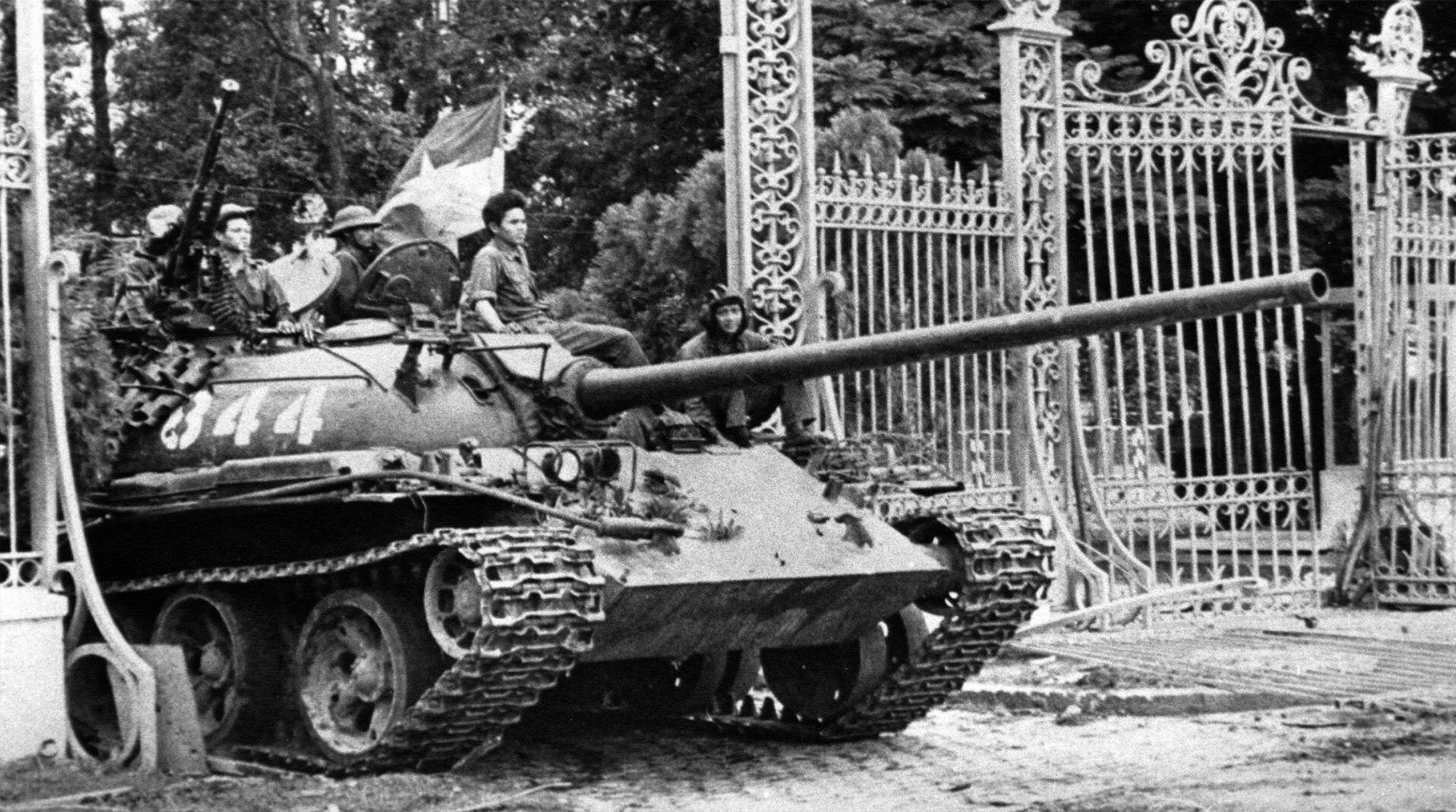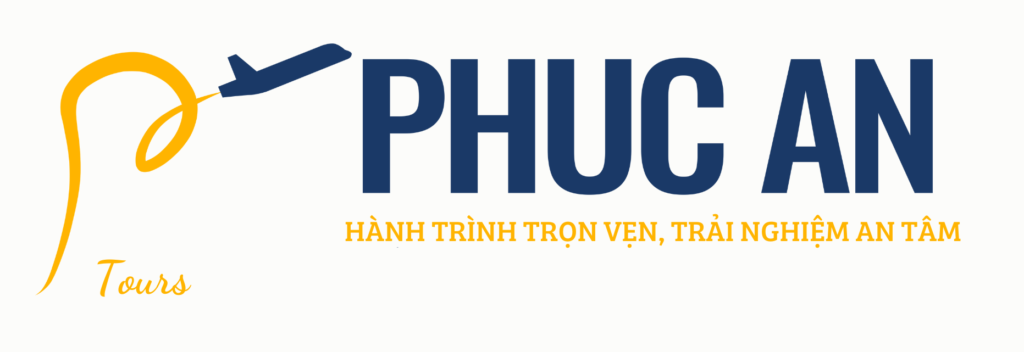
Dinh Độc Lập, also known as the Independence Palace or Reunification Palace, is one of the most important historical sites in Ho Chi Minh City. This impressive building witnessed key events in Vietnam’s modern history, especially the fall of Saigon in 1975, marking the end of the Vietnam War. Today, Dinh Độc Lập stands as both a museum and a symbol of peace and unity, offering visitors a chance to step back in time and understand Vietnam’s journey to independence.
Contents
Why Visit Dinh Độc Lập?
A Symbol of Vietnam’s Independence and Resilience
Built on the site of the former Norodom Palace, Dinh Độc Lập has long been associated with Vietnam’s struggle for independence. The current structure, completed in 1966, served as the presidential residence and government headquarters during the Vietnam War. The palace became an iconic symbol on April 30, 1975, when a North Vietnamese tank famously crashed through its gates, leading to the end of the war and the reunification of Vietnam.
Architectural Masterpiece
Dinh Độc Lập is an architectural gem, designed by Vietnamese architect Ngô Viết Thụ. This mid-century building combines traditional Eastern principles with modernist elements, resulting in a unique style that reflects both cultural heritage and progressive design. The palace features spacious halls, elegant reception rooms, a large theater, and even a rooftop helipad. The design reflects the influence of both Western and Eastern architectural concepts, with open spaces that symbolize balance and harmony.
A Glimpse into Vietnam’s Political History
For history enthusiasts, Dinh Độc Lập offers a profound insight into Vietnam’s political landscape. Visitors can explore the presidential quarters, the war strategy rooms, and various office spaces that were once the nerve centers of Vietnam’s leadership. The underground bunker, which was used as a command center during the Vietnam War, remains preserved with maps, telecommunication devices, and tactical artifacts. Every corner of the palace has a story, and guided tours provide fascinating details about Vietnam’s path to independence.
Highlights and Attractions at Dinh Độc Lập

The Main Gate
The front gate of Dinh Độc Lập is an iconic symbol of the palace and the country’s turbulent history. Constructed with sturdy iron bars and intricately designed with decorative elements, this gate is not just an entry point to the palace but also a witness to many significant historical events. On April 30, 1975, during the fall of Saigon, the gate became the focal point of a dramatic moment in history when tanks of the North Vietnamese Army broke through it, signaling the end of the Vietnam War and the reunification of the country. This moment is etched in the collective memory of Vietnam, and standing before this gate, visitors can almost feel the weight of the history that unfolded here. The broken gates serve as a powerful reminder of the resilience and courage of a nation that fought for its independence and sovereignty. Today, the gate is a place of reflection, where visitors can contemplate the monumental changes that this site witnessed during one of the most defining moments of the 20th century.


The Presidential Reception Rooms
On the ground floor of Dinh Độc Lập lies the Presidential Reception Rooms, a series of lavishly decorated spaces that once hosted Vietnam’s top political figures and foreign dignitaries. These rooms are a true testament to the grandeur and sophistication of the South Vietnamese government during its heyday. Adorned with exquisite Vietnamese art, intricate lacquerware, and traditional furnishings, the rooms offer a glimpse into the country’s cultural heritage, providing visitors with a sense of how power and diplomacy were conducted in this historical setting.
The walls of these rooms echo with the voices of presidents and foreign ministers who once engaged in crucial discussions about the country’s future. Visitors can appreciate the meticulous craftsmanship of the furniture, the rich colors of the artwork, and the overall design that reflects the fusion of Vietnamese traditions and modern influences. These rooms are not just a reflection of political history but also serve as a testament to the country’s artistic and cultural achievements.

The War Strategy Rooms and Bunker
The basement of Dinh Độc Lập houses one of the most significant and historically charged areas of the palace—the War Strategy Rooms and the command bunker. This underground area was once the nerve center for South Vietnam’s military leadership, where crucial decisions were made during the Vietnam War. Inside the bunker, visitors can observe an array of wartime artifacts, including detailed maps, old communication equipment, and personal items left behind by the soldiers and officers who worked here.
The walls of the bunker are lined with photographs and documents that offer an intimate look at the intense pressure and strategic thinking that took place in these rooms. It is here that crucial military strategies were devised, decisions were made in times of crisis, and the future of the country was shaped. For history enthusiasts, this is an essential part of the palace visit, offering a unique perspective on the inner workings of the war and the challenges faced by the leaders who were entrenched in the conflict.

The Rooftop Helipad
The rooftop of Dinh Độc Lập holds an area that is both historically significant and offers a unique vantage point—the helipad. This platform was used during the war as a landing site for helicopters, a critical means of evacuation and transportation for political figures during times of crisis. Visitors can stand on the helipad and imagine the dramatic scenes that unfolded here, particularly in the final days of the Vietnam War, when helicopters were used to evacuate key individuals from the palace as the city fell.
Beyond its historical significance, the rooftop offers stunning panoramic views of Ho Chi Minh City. From this height, visitors can gaze out over the bustling cityscape, with its blend of modern skyscrapers and historic architecture, offering a striking contrast to the turbulent events that once took place in this very location. The view provides a powerful reminder of how far the country has come since those dark days.

Visitor Information for Dinh Độc Lập
-
Opening Hours: Dinh Độc Lập is open daily from 8:00 AM to 4:00 PM. To make the most of your visit, it’s recommended to arrive early in the morning or later in the afternoon when the crowds are lighter, allowing for a more relaxed exploration of the palace.
-
Admission Fees: The entrance fee is generally around 40,000 VND for adults. For those interested in a deeper understanding of the palace’s history, guided tours are available in multiple languages. These tours offer valuable context and insights into the historical and architectural significance of the site, making the experience much more enriching.
-
Location: Dinh Độc Lập is situated in District 1 of Ho Chi Minh City, an area easily accessible to tourists. It is conveniently located near other major landmarks, such as Notre Dame Cathedral and the Saigon Central Post Office. This makes it possible for visitors to experience several of the city’s cultural and historical treasures in a single day.
Tips for Visiting Dinh Độc Lập
-
Take a Guided Tour: While it is possible to explore the palace on your own, a guided tour is highly recommended. The knowledgeable guides provide detailed narratives about the building’s history, the significance of its rooms, and the political and military events that took place within its walls. This will enhance your understanding and appreciation of the site.
-
Allow Plenty of Time: Dinh Độc Lập is a large and historically rich site, and it’s best to allocate at least two hours to fully explore the palace grounds. This will give you time to take in the exhibits, explore each level of the building, and absorb the fascinating history that permeates the space.
-
Dress Appropriately: While there is no strict dress code, it’s advisable to wear respectful attire when visiting a historical site of such significance. Comfortable shoes are also recommended, as there is quite a bit of walking involved in exploring the palace.
Experience Vietnamese Culture at Dinh Độc Lập
In addition to its historical importance, Dinh Độc Lập offers an exceptional opportunity to experience Vietnamese culture firsthand. The palace’s architecture is a blend of modern and traditional Vietnamese design elements, reflecting the principles of feng shui and the symbolic use of natural materials. The interior design showcases the country’s rich artistic traditions, from intricate woodwork to elegant lacquerware, offering visitors a deep dive into Vietnam’s cultural heritage.
The balance between modern architectural style and traditional Vietnamese aesthetics is evident in every corner of the palace, from the meticulously designed rooms to the carefully chosen decorative pieces. This fusion of old and new creates a space that is both a historical monument and a celebration of the Vietnamese spirit.
Conclusion
Dinh Độc Lập is more than just a historical site; it is a living testament to Vietnam’s resilience and its journey through war, conflict, and eventual reunification. The palace offers a unique opportunity to walk in the footsteps of history, explore the architectural splendor of the building, and gain a deeper understanding of the pivotal moments that shaped Vietnam’s modern identity.
Whether you’re a history enthusiast, an architecture lover, or simply curious about Vietnam’s story, Dinh Độc Lập is an unmissable destination in Ho Chi Minh City. It invites visitors to reflect on the past, appreciate the present, and look forward to a future shaped by the lessons of history.
Hotline: 096 396 6328 (Zalo)
Fanpage: https://www.facebook.com/phucanvisa/
Our team is ready to assist you with all your travel needs, from domestic tours to international adventures, and even legal processes for entry and exit in Vietnam.
Call us now for personalized travel advice!






